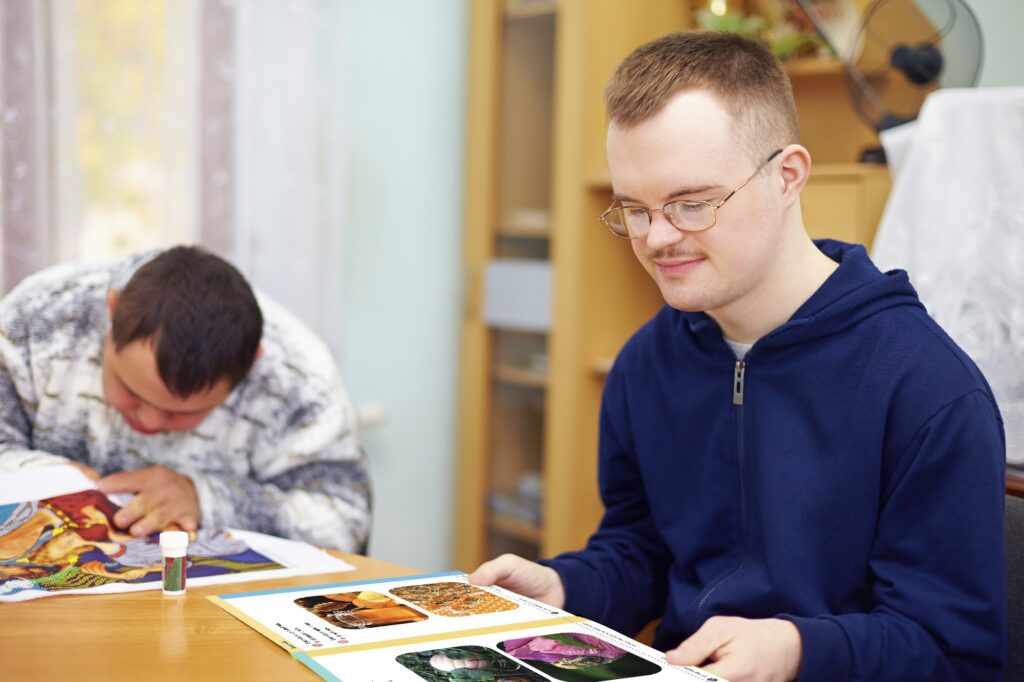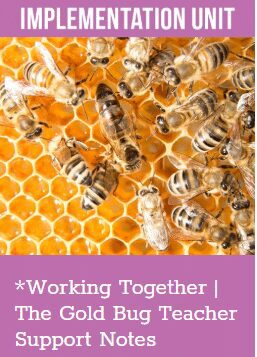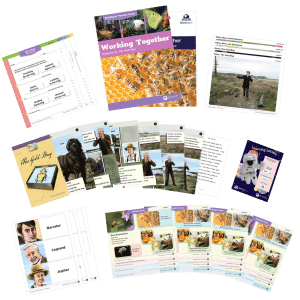Readtopia at Home: Supporting Students with Complex Needs

Thinking back to February 2020—it seems like an entirely different world. In a mere matter of weeks, COVID-19 has flipped the fabric of your day upside down. Your teaching has long since been uprooted, and now you’re left wondering what to do for your special education class.
For your students with complex needs—each of whom you know so well—you’re left wondering:
- How do I support my students when they’re not in school?
- What resources are available that will work for remote/eLearning?
- What do parents need from me?
The truth is, it’s complicated
So many questions remain unanswered as new information comes down daily from the school administration and the course of this virus unfolds. There’s no roadmap—especially for students with complex needs who require intensive instructional, physical, intellectual, and emotional support.
Each of us plays a role in the solution. It won’t be perfect, but we feel that many pieces when put together will help move the world forward, starting with our classrooms, students, and families.
What we’re doing to help
When the quarantine hit, we decided to offer two free Readtopia Thematic Units to teachers and parents. The interest has been overwhelming in the best of ways, and they’re already helping thousands of teachers and families. One of the thematic units (for middle and high school age students) is around the theme Working Together which is appropriate and timely. The other (for late elementary) unit revolves around birds, mammals, and reptiles and is anchored by the narrative book, Dr. Dolittle.


Each of the “mini” units provide at least four weeks of content (depending on the pace of instruction) all accessible from a central website. They put resources in place that can be easily shared with parents and caregivers. The materials are available to access online and can be downloaded to devices or printed out.
The Working Together Mini Unit includes:
- Videos
- Graphic Novels and literature (at seven levels)
- Word Study & Phonics Activities (at three levels)
- Math Lessons (up to six levels)
- Informational Text (at four levels) for close reading instruction
- Content Writing Lessons
- Instructional Guides

The lessons are scripted for anyone to deliver, be they educator, parent, or caregiver. Beginning and non-readers all the way to more conventional readers are covered, and phonics and word study activities give access to the alphabet through printable letter tiles.
We hope these materials help give you some resources in this challenging time for everyone—especially challenging when trying to transition instruction online for students with complex needs. You can get free access now at https://learningtools.donjohnston.com/product/readtopia/request-1/.
The Readtopia origin story.
If this is your first time hearing about Readtopia, you may be wondering what it is, who it’s for, and why it was created. It came from Don Johnston, our CEO and founder. He grew up as a struggling learner himself; he didn’t read his first book until his freshman year in high school. He feels a strong connection to people experiencing all kinds of challenges from dyslexia to autism and other complex needs. To address the needs of the students with the most significant needs, Don brought together the top minds in the field—including teachers, researchers, practitioners, accessibility experts, and even world explorers (who play an important role in experiential learning). The team spent years designing and continues to develop the teaching units that give special education teachers the resources to do the remarkable work they set out to do every day.

Let’s get through this together.
The WHAT
The Readtopia mini unit contains:
- Scripted lesson guides
- How to do shared reading
- Tips for using AAC communication devices
- Alphabet activities (Learning Letters, Phonics, Word Study)
- Basic math activities
The WHERE
Readtopia is packed with materials, like independent math practice, that will prove vital to your instruction. Get to know the Unit Resources tab in your teacher guide. You’ll find incredible depth the more you scroll.
The WHEN
You get to pick the time, of course. Whatever works best for you and your students. But try to do at least two lessons a day. That’s the amount we’ve found works best for keeping the flow going while not rushing through it. Also, stick to the schedule since we all do better if we have a routine.
The WHO
Get the family involved! If siblings are available, involve them with the lessons. They might need something worthwhile to do, and students will enjoy working with them. And for Show & Share time, there’s no one better than family friends and grandparents. Being socially isolated is challenging for everyone. Connecting through video chat gives much needed social interaction opportunities.
The HOW
If you’re wondering how to get started, return early and often to the teacher guide. It will show you all you need to know. After that, build excitement. Your attitude is contagious!
About the Teacher Guide
It’s your new best friend. It’s very scripted, holding your hand as you’re getting familiar with the materials. The Working Together unit has extra prompts for beginners, so be on the lookout for blue highlights.
You can do this!
It will feel strange at first, but it’s going to get easier. Chapter 1 is the hardest, and you’ll figure it out rapidly after that. Believe in yourself, remember to breathe, and have fun.
And now, it’s time to get direction from Dr. Musselwhite, a leader in literacy instruction and AAC for students with complex needs. Before you begin the webinar, feel free to download the Working Together unit and follow along.

